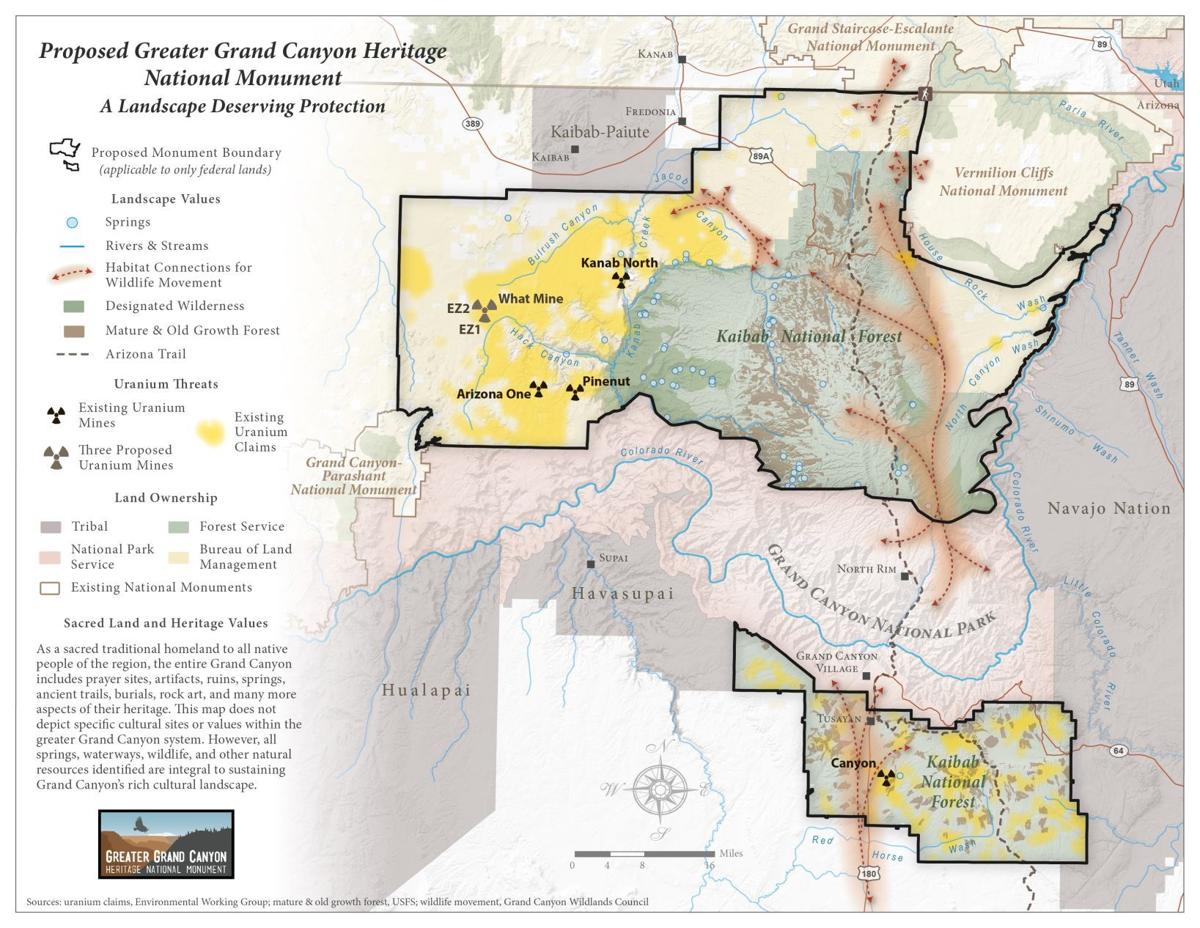PHOENIX — Gov. Doug Ducey is threatening legal action if President Obama sets aside 1.7 million acres of public lands in Arizona for a new Greater Grand Canyon Heritage National Monument.
But his chief spokesman won’t — or can’t — cite any authority for such litigation.
And lawsuits to quash previous presidential designations, including two in Arizona, left challengers empty-handed.
The governor’s threat comes on the heels of the president earlier this week setting aside 1.35 million acres in the Four Corners area of Utah for the Bears Ears National Monument. That move had been urged by conservationists and Native American tribes who consider the land sacred.
Separately, Obama created the Gold Butte National Monument near Las Vegas, a 300,000-acre site designed to protect an area that includes rock art, artifacts and fossils.
“Today’s actions will help protect this cultural legacy and will ensure that future generations are able to enjoy and appreciate these scenic and historic landscapes,” the president said.
But Ducey, responding to the twin designations, is urging Obama not to try the same thing in Arizona in the area around Grand Canyon National Park believed to be rich in uranium deposits. He pointed out that Arizona already has more presidential-designated monuments than any other state.
“Our state needs no further designations,” the governor said in his own statement. And Ducey said existing ones already have harmed the ability of the state to manage wildlife, claiming the Sonoran Desert National Monument has resulted in a decline in the number of desert sheep because the state can’t maintain water catchments the herds need.
And if gubernatorial urging does not stop the designation, Ducey has a warning.
“If designated by the president in his waning hours, Arizona will take every step necessary — legally and legislatively — to stop it,” the governor said in his statement.
Yet gubernatorial press aide Daniel Scarpinato was short on specifics of what would be the legal basis to challenge such action.
“We’ll talk about that if there is an action by the president,” he said. “At this point there has not been.”
And Scarpinato rebuffed questions of whether there really is any precedent for actually winning such a lawsuit.
But the record shows challengers to prior presidential actions have had little success.
More than a decade ago, for example, Mountain States Legal Foundation challenged a series of designations made by President Clinton near the end of his term, including the massive Grand Canyon-Parashant National Monument of more than 1 million acres in northwest Arizona as well as the nearly 129,000-acre Ironwood Forest monument near Tucson.
Challengers argued Clinton acted outside the scope of his authority and asked the courts to review.
A federal judge threw out the complaint. And the Court of Appeals for the District of Columbia in 2002 found no legal infirmity in what Clinton had done.
The closest Ducey comes to suggesting a basis for a lawsuit is that Antiquities Act, the 1906 federal law allowing the president to designate national monuments, says such areas must be “confined to the smallest area compatible with proper care and management of the objects to be protected.”
“This proposed designation of 1.9 million acres of land would be a clear violation of that intent,” the governor said in his statement. But there appears to be no case law where courts have been willing to second-guess a presidential determination that any given area is not the “smallest” necessary to achieve the objective.
“This isn’t a political issue,” Scarpinato said of Ducey’s opposition to a new monument. What it is, he explained, is taking action to ensure that such designations do not undermine local economies.
One big issue deals with the future of uranium mining.
The Department of Interior in 2012 closed off the area to new uranium mining until 2032. That decision is being challenged by mining interests, with the 9th U.S. Circuit Court of Appeals expected to rule on the issue this coming year.
Monument designation likely would leave existing operations intact. But it would forever preclude new claims regardless of the outcome of the pending lawsuit.
“I think the governor wants to strike the right balance between not negatively impacting our state and also preserving our natural resources,” Scarpinato said. He said Ducey “believes we’re doing a great job right now and we’ve struck that balance.”
Even if litigation proves fruitless, Scarpinato said Ducey could pursue other avenues.
“I think we all know that there will be a new President and a new Congress sworn in next month,” he said. “I think there would be legislative options at our disposal.”
Congress can override a presidential declaration and remove a monument designation. But it is an open question at best whether Donald Trump, if he wanted to, could unilaterally undo any or all of Obama’s designations.
Ducey is correct that Arizona does have more national monuments than any other state. What he did not acknowledge in his statement is that half of them actually were created by Republican presidents going back to Theodore Roosevelt who gave such designations to Montezuma Castle, Tonto and Navajo monuments.
In terms of pure acreage set aside, though, Democrats hold the edge by far. In fact, out of more than 2.1 million acres of national monuments in Arizona, Clinton alone is responsible for more than 1.5 million acres.
Ducey is not alone among Republicans in his opposition. The state’s two senators, John McCain and Jeff Flake, sent their own letter to the president earlier this year saying they believe that 1.7 million acre designation goes beyond the intent of the Antiquities Act.





